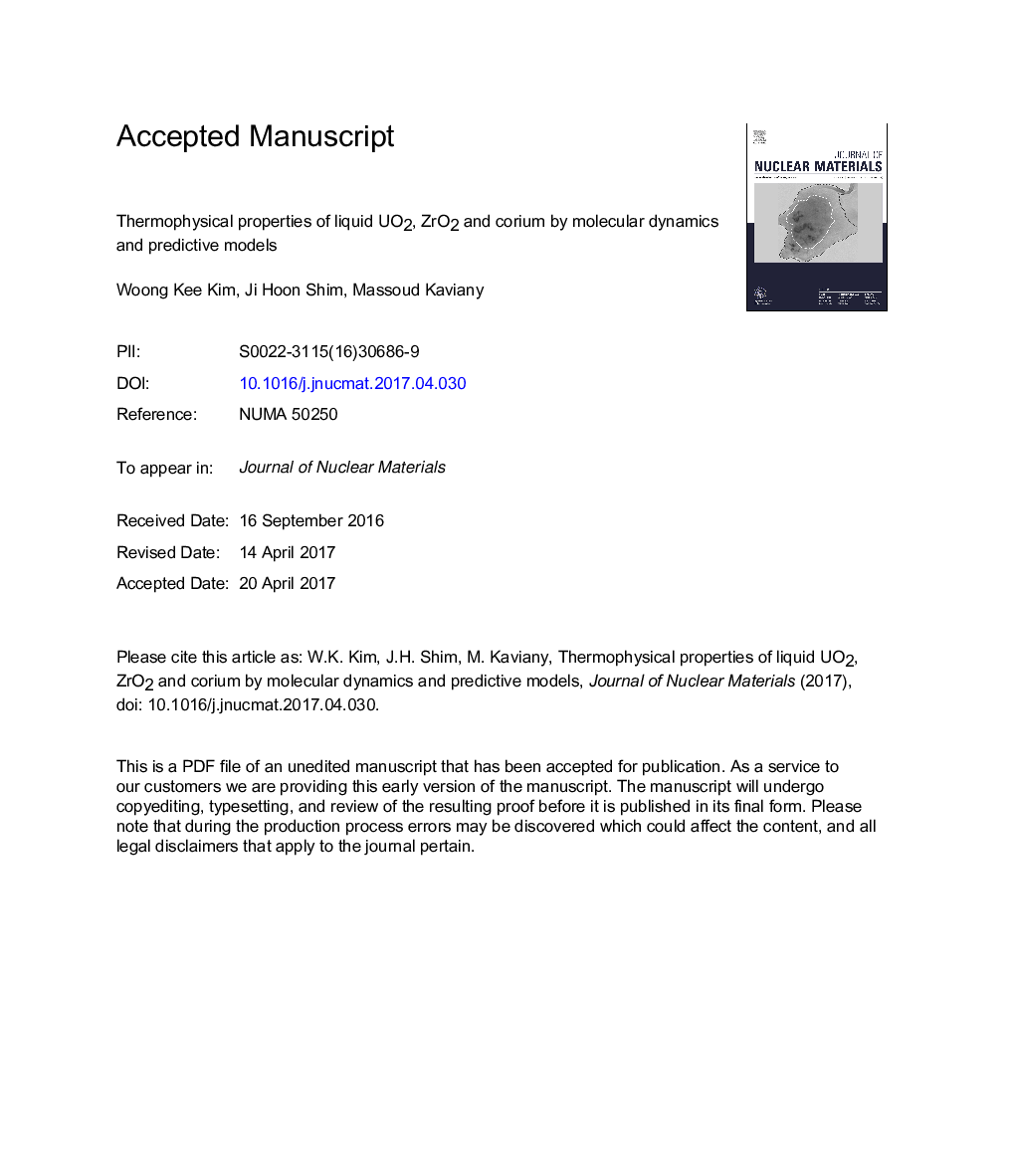| Article ID | Journal | Published Year | Pages | File Type |
|---|---|---|---|---|
| 5454000 | Journal of Nuclear Materials | 2017 | 20 Pages |
Abstract
Predicting the fate of accident-melted nuclear fuel-cladding requires the understanding of the thermophysical properties which are lacking or have large scatter due to high-temperature experimental challenges. Using equilibrium classical molecular dynamics (MD), we predict the properties of melted UO2 and ZrO2 and compare them with the available experimental data and the predictive models. The existing interatomic potential models have been developed mainly for the polymorphic solid phases of these oxides, so they cannot be used to predict all the properties accurately. We compare and decipher the distinctions of those MD predictions using the specific property-related autocorrelation decays. The predicted properties are density, specific heat, heat of fusion, compressibility, viscosity, surface tension, and the molecular and electronic thermal conductivities. After the comparisons, we provide readily usable temperature-dependent correlations (including UO2-ZrO2 compounds, i.e. corium melt).
Keywords
Related Topics
Physical Sciences and Engineering
Energy
Nuclear Energy and Engineering
Authors
Woong Kee Kim, Ji Hoon Shim, Massoud Kaviany,
